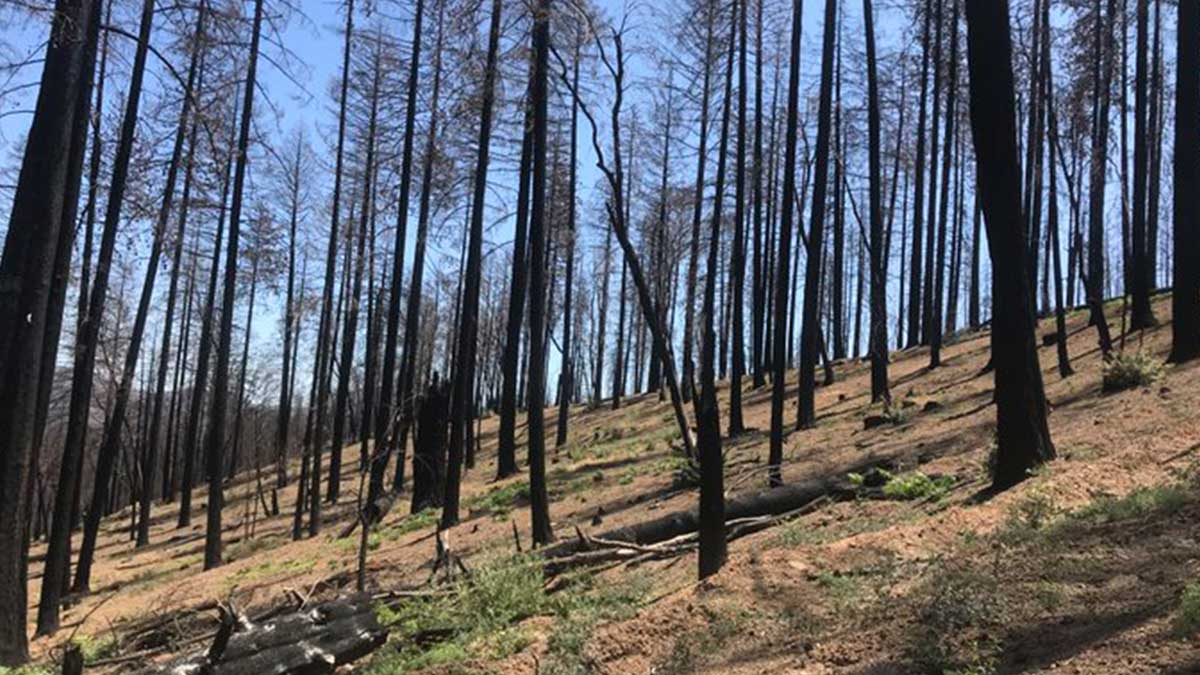New research indicates salvage logging that takes place after a wildfire reduces the amount of available fuel or standing dead trees and, therefore, the potential severity for possible future fires. Those findings assist forest managers with their decisions about how to best manage a post-fire landscape – either apply various active management treatments or leave the forest to recover naturally on its own.
Morris Johnson, a research fire ecologist with the USDA Forest Service (USFS) Pacific Northwest Research Station, oversees the long-term, multi-year study. He established controlled study areas within the perimeter of the 2015 Okanogan Complex, the largest fire in Washington history that burned 304,782 acres and destroyed 120 homes, and the 2020 August Complex, the largest fire in California history that scorched more than one million acres and destroyed nearly 1,000 structures.
“I wanted to work with forest managers and use these recent large wildfires as opportunities to implement long-term management experiments to improve the scientific basics for decision-making and to address some of the controversy surrounding salvage logging,” said Johnson.
Fire is a part of the natural ecosystem but decades of fire suppression set the table for extremely intense wildfires that char hundreds of thousands of acres of forest and wildlife habitat, and gobble up millions of dollars of USFS budgeted funds.
“This research process is not so much a shift in how we do things, but an added element that puts science behind it,” said Hinda Darner, Mendocino National Forest fuels officer. “It’s a win-win for all of us. It’s pretty exciting to be working with Morris. The more work like this we can do, the better we are as an agency.”
(Photo credit: Morris Johnson/U.S. Forest Service)
